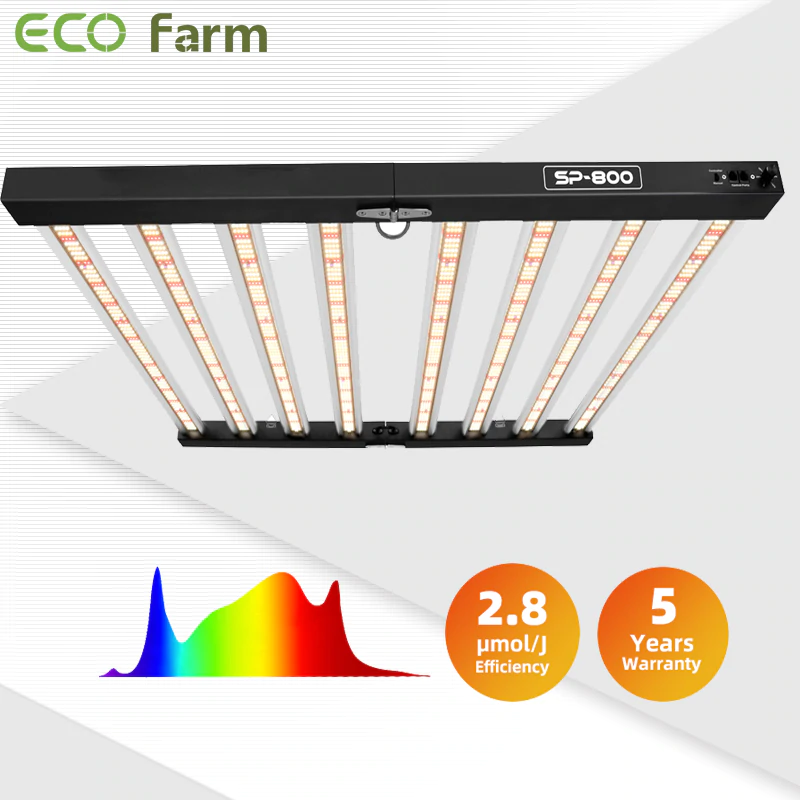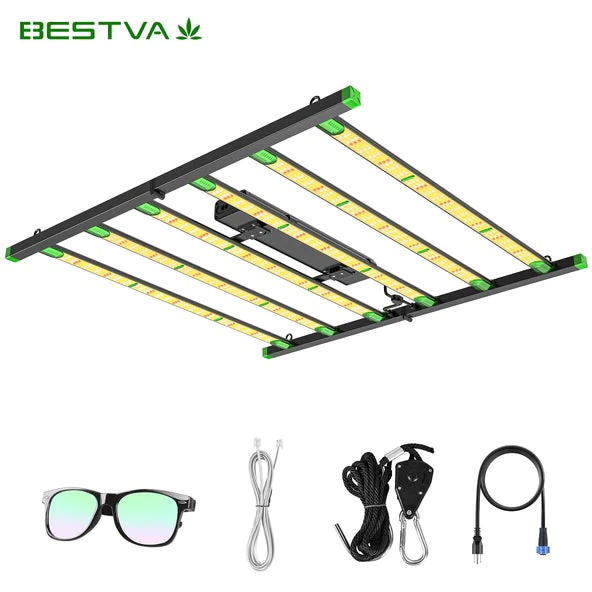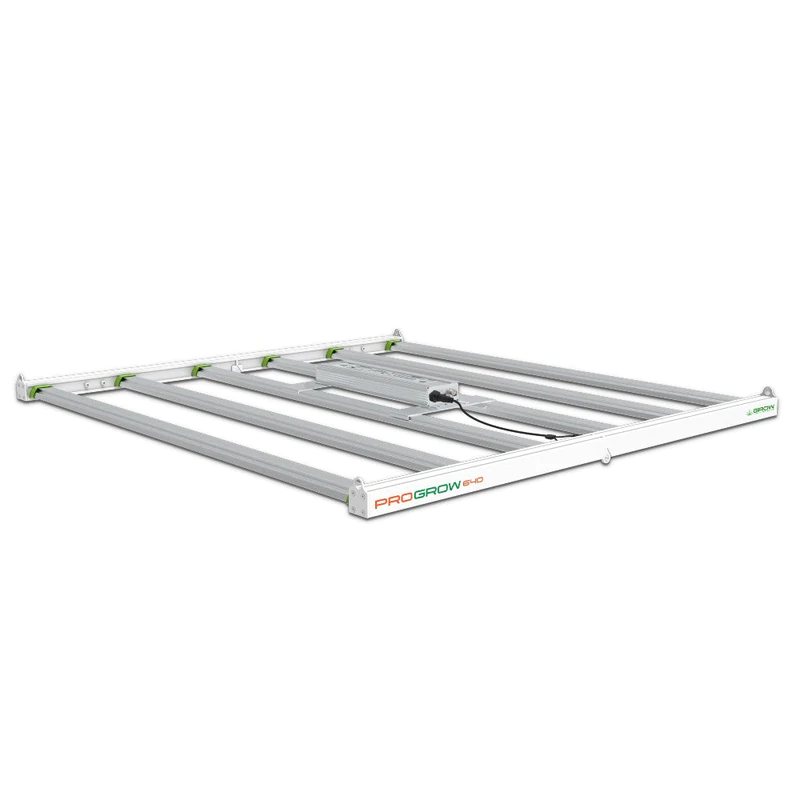- Home
- SHOP ECO FARM
-
TOP BRANDS
-
Grow Lights Brands
- Adjust-A-Wing
- Apollo Horticulture
- Bestva
- Black Dog LED
- California Lightworks
- ChilLED Grow Light
- Eco Farm
- HLG - Horticulture Lighting Group
- Kingled
- Kind LED
- Mars Hydro
- Morsen
- Neilo
- NextLight
- Phlizon
- PlatinumLed
- Roleadro
- Optic LED Grow Lights
- ViparSpectra
- Vivosun
- EYE Hortilux
- IPOWER
- NanoLux
- Phantom grow light
- Gavita grow lights
- Grower's Choice
- Lumatek
- Maxibright
- Yearld Pro
- ThinkGrow
- Crecer Lighting
- Green Sunshine Electric Sky
- fohse aries
- loriflux
- luxx
- fluence
- iluminar
- Lex
- LTC
- Rayonled
- FGI
- PHOTONTEK
- Grow Tents & Kits Brands
- Extraction & Harvest Brands
- Climate Control & Hydroponic Brands
-
Grow Lights Brands
- COMPANY INFO
- COOPERATE WITH US
- Blog
- Sign in
- Home
-
SHOP ECO FARM
- ECO Farm Grow Lights
- ECO Farm LED Grow Lights
- ECO Farm Quantum Board
- ECO Farm Samsung LED Grow Lights
- ECO Farm COB Grow Lights
- ECO Farm Commercial Lights
- ECO Farm Supplemental Grow Light
- ECO Farm Fluorescent grow lights
- ECO Farm HPS & MH Grow Lights
- ECO Farm CMH Grow Lights
- ECO Farm HID/CMH Bulbs & Ballasts
- ECO Farm Grow Tents & Kits
- ECO Farm 2x2ft Grow Kits
- ECO Farm 3x3ft Grow Kits
- ECO Farm 3.3x3.3ft Grow Kits
- ECO Farm 4x4ft Grow Kits
- ECO Farm 5x5ft Grow Kits
- ECO Farm Grow Tent - Standard Style
- ECO Farm Grow Tent - Extension & Roof & Lodge Style
- ECO Farm Extraction & Harvest
- ECO Farm Rosin Press Machine
- ECO Farm Dry & Wet Trimmers
- ECO Farm Oil Accessories
- ECO Farm Medicinal Plants Grinder
- ECO Farm Medicinal Plants Containers
- ECO Farm Medicinal Plants Dryer
- ECO Farm Refrigeration Dryer
- ECO Farm Climate Control & Other Accessories
- ECO Farm Inline Duct Fans
- ECO Farm Oscillating Fans
- ECO Farm Exhaust Fans
- ECO Farm Air Filter
- ECO Farm Duct Muffler
- ECO Farm Ventilation Kits
- ECO Farm Plant Humidifiers
- ECO Farm Plant Dehumidifiers
- ECO Farm Hydroponic Accessories
- ECO Farm Other Accessories
- ECO Farm Hydroponics Microscopes
-
TOP BRANDS
- Grow Lights Brands
- Adjust-A-Wing
- Apollo Horticulture
- Bestva
- Black Dog LED
- California Lightworks
- ChilLED Grow Light
- Eco Farm
- HLG - Horticulture Lighting Group
- Kingled
- Kind LED
- Mars Hydro
- Morsen
- Neilo
- NextLight
- Phlizon
- PlatinumLed
- Roleadro
- Optic LED Grow Lights
- ViparSpectra
- Vivosun
- EYE Hortilux
- IPOWER
- NanoLux
- Phantom grow light
- Gavita grow lights
- Grower's Choice
- Lumatek
- Maxibright
- Yearld Pro
- ThinkGrow
- Crecer Lighting
- Green Sunshine Electric Sky
- fohse aries
- loriflux
- luxx
- fluence
- iluminar
- Lex
- LTC
- Rayonled
- FGI
- PHOTONTEK
- Grow Tents & Kits Brands
- Apollo Horticulture
- Black Box
- CoolGrows
- Eco Farm
- GrowLab
- Gorilla Grow Tents
- Mars Hydro
- Quictent
- Secret Jardin
- Unit Farm
- TopoGrow
- VIVOSUN
- Topolite
-
COMPANY INFO
-
COOPERATE WITH US
- Blog
2022 Best 600W LED Grow Lights for 4x4 Grow Tents
March 28, 2022
4×4 grow tents are perhaps the most popular-sized grow tents out there. They have a clear advantage over the other major sizes such as 2×2 and 6×6 or 8×8 because while 2×2 is too small, 6×6 and 8×8 are too large and will take up a lot of space inside a room. 4×4, on the other hand — hits just that sweet spot. In this article, however, we talk about a very special element that you need with your grow tent. We take a closer look at the best LED grow lights for 4×4 grow tents.
Why we thought it was necessary for us to write an article about these grow tents is that there are practically hundreds of options out there for LED lights of a tent this size. This is what we have gone through hundreds of grow lights to choose the best options for you! This is a definitive list of the top options that you have when it comes to buying a grow light for your 4×4 grow tent.
We have selected these grow lights on the basis of performance, price, and features. Our focus has also been on futureproofing our readers — so we’ve chosen most grow lights that follow the latest, most modern of standards, and can last you for years to come. A grow light is a long-term investment and is usually something that can last up to a decade if used with care.
Lastly, in addition to all this, we’ve also made it a point to not include any HPS/MH/Fluorescent light, and have gone only with LEDs, which offer the latest standards of lighting, are safer, consume less electricity, and operate at cooler temperatures. With that in mind, let us take a deep dive at all the best options available to you:
ECO Farm SP-600 Samsung Foldable Dimmable Full Spectrum LED Grow Light

Features:
With a high efficiency of 2.8 umol/j and a power consumption of 630W, this ECO Farm LED grow light facilitates efficient growing operations, helping you efficiently optimize plant growth, improve yield quality and reduce operating costs. This full spectrum LED grow light promotes photosynthesis at all stages of growth, especially flowering, from cutting/seeding, nutrition and flowering. Grow lights for indoor plants replicate the spectrum of natural sunlight and output a broad, consistent and pronounced wavelength range from 400 to 700nm that can be grown throughout the plant life cycle. It can help your plants grow healthier and have better harvests. LEDs generate far less heat than HPS and other HID lights, making them ideal for gardening. The aluminum heatsink, along with the wide 6 passive cooling strips, better removes heat to keep you cool and reduces ambient heat in the grow space for longer lamp life.
BESTVA BAT W600 Dimmable LED Grow Light

Features:
The BAT W600 LED is the solution for indoor growing environments where ceiling height and distance from the tree canopy are critical. The BAT W600 is ideal for use in vertical racks, low rooms, benches and even tents. The BESTVA BAT W600 provides an efficient full spectrum and a healthy red-blue ratio to drive photo composition. Light energy between 500–599nm, previously thought to be wasted, penetrates deep into the plant canopy and promotes photomorphogenetic responses. High color rendering “white” light helps quickly identify potential threats to crops and provides superior working conditions and safety for workers.
Grow Light Science PROGROW 640 LED Grow Light

Features:
PROGROW 640 is a full cycle overhead lighting solution for commercial or residential plants cultivation. The 640’s form factor allows for expandability and multiple grow room and grow tent configurations where photosynthesis and yield maximization are the goals. PROGROW 640 provides high PPFD levels with or without CO2 supplementation. Top light output (PPF), spectral distribution and efficacy will deliver amazing results with little impact on your wallet. PROGROW 640 will deliver PPFD levels of over 1,000 umols/m2/s, either individually or in arrays of multiple cells. We recommend that all growers conduct research and trials within their growing space to design the best combination of inputs.
Best LED Grow Lights Buying Guide
Before buying the suitable LED grow light for your indoor garden, you must consider the following factors to get the ideal one:
1. Spectrum Type:
As we have mentioned above, different wavelengths of lights are responsible for the various growth stages of the plant. Depending upon the type of harvest you want to cultivate in your indoor garden, you should opt for specific grow light with a suitable wavelength.
Suppose you have multiple plants at different growth stages. In that case, it is advisable to go for an adjustable LED grow light that can tune to different wavelengths depending upon the plant requirement. So, always check the light spectrum and its wavelength range before buying the one for your plants.
2. Heat Output:
It is a crucial factor to consider while buying the top LED grow light for your indoor garden. Grow lights are generally mounted close to the plants, and thus, these LEDs mustn’t produce overheat as they can damage the plant’s growth.
LED with heat sinks or cooling fans are suitable for vertical gardens or indoor plants as they have no adverse effects on plants and can be placed even closer to them. An ideal Grow light must produce low heat to be the last longer, and you don’t have to replace it soon.
3. Grow Space Size vs. Light Coverage Area:
Depending upon the grow space size, you decide how many lights of how many watts will be sufficient enough for various plants’ growth. First, you should determine the size of the garden and then consider the area each light needs to illuminate.
Different plants require different voltage for their proper growth. For example, if you want to grow tomatoes, 32 watts of LED light per square foot will be suitable for it. But if you’re going to produce light harvests like Lettuce or anything, 11–18 watt per square foot is sufficient for that.
4. Efficiency:
The efficiency of the Grow Lights is one of the critical aspects you must check. An ideal grow light must be operated at a high level to produce high energy with a low maintenance cost.
So, before jumping to the suggestions of the best LED grow lights, you must consider all these aspects, make your calculation and then choose which one is ideal for you according to your requirements.
5. Real Wattage vs. Theoretical Wattage
Most of the LED lights have two wattages: Real Wattage and Theoretical Wattage displayed on their packaging. Theoretical Wattage is the potential wattage on which an LED light could run when LED chips run at full power. For example, A 1000W LED light can have theoretical wattage of around 600Watt. But LED lights never run on full power as it will shorten their life.
So, LED lights always run at 50–60% of their theoretical wattage, known as their real wattage. It is the amount of light LEDs actually consume to perform. So, a 1000W LED light generally has real wattage of around 300–400 Watt, and you must consider both these wattages before buying a grow light.
6. Cooling System
Large LED lights emit more heat while providing intense light to your plants for their growth, and thus they must be equipped with a proper heat sinking system and cooling fans for heat dissipation.
In the absence of both these things, the life span of LED light will shorten, and performance will decline. Also, the overheating won’t be good for your plants as well. So always give attention to the cooling system of LED grow light before buying one.
Why is the flowering coverage important while choosing a grow light?
When you are looking for a grow light, the only coverage number you need to consider is the flowering coverage. This is because vegetative coverage is usually larger than flowering because the height of the light is a little higher at that time. Basically, if you’re growing in a 4×4 area, and if your vegetative coverage is 4×4, then the flowering coverage is going to be 3×3 and some of your plants will be left out. This happens because the light is generally lowered and brought closer to the plants during the flowering phase. Hence, always make sure you’re buying the grow lights based on the flowering coverage and not the other number.
Conclusion
When it comes to LED grow lights, there are just way too many options in markets out there. With 4×4 grow tents being among the most popular size of grow tents, we thought it was important to put out a best-of list out there. We have tried to provide a review that is as detailed as possible, along with all the pros and cons of the products. However, if you think there’s a specific aspect that you want to know more about, or want us to review a grow light of your choice, do reach out to us over comments or on mail and we shall get it done as soon as we possibly can!
